How To Build A Clay Fish For Kids
Do you want to build a 3-D easy pottery fish sculpture with your art class? Get all the details and instructions with this clay fish art lesson for kids.
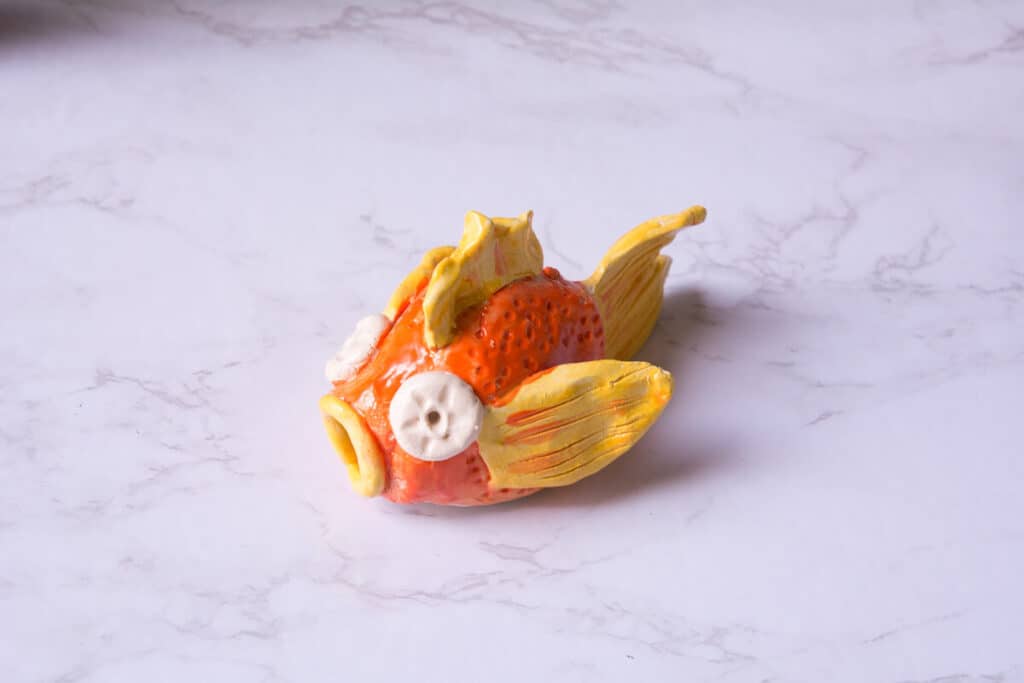
Disclosure: We only recommend products we would use ourselves and all opinions expressed are our own. This post may contain affiliate links when clicked, we may earn a small commission at no additional cost to you. Read our full privacy policy.
This clay project is an awesome 2-day clay building project that will take about 1 hour to complete. In the past, I have done this project with 3rd or 4th graders. This age seems to be able to have the fine motor skills to be able to build a hollow structure and add details to complete a clay fish sculpture.
Why is this simple clay fish build a good project?
As with most art projects for kids, this one allows kids to be able to add details based on their own level and abilities. You can teach kids about basic art elements like form and texture but also add extra vocabulary like movement.

Why does the clay fish body have to be hollow?
It is essential to teach kids about how a kiln works. I like to explain that if you just put a big chunk of clay in the kiln then it will explode. They obviously are fascinated by this. This visualization allows them to understand that they have to have a hollow shape for the body and that their fish details cannot be too thick.
How to prep for a group of kids to build clay fish?
- Pre-cut clay with a wire cutter.
- Set up placemats for kids to work with.
Before the actual clay building begins, you will want students to create a sketch of the fish they want to create. To help with this, look at examples of real fish and ask students to observe the details that make up a fish.
Have children sketch a least 3 basic shapes.
I always tell kids that artist make multiple sketches because their first idea is not always their best idea. And if your first idea is the best, you will know it after you have drawn the others.
Tips for storing clay from day to day (or class to class)
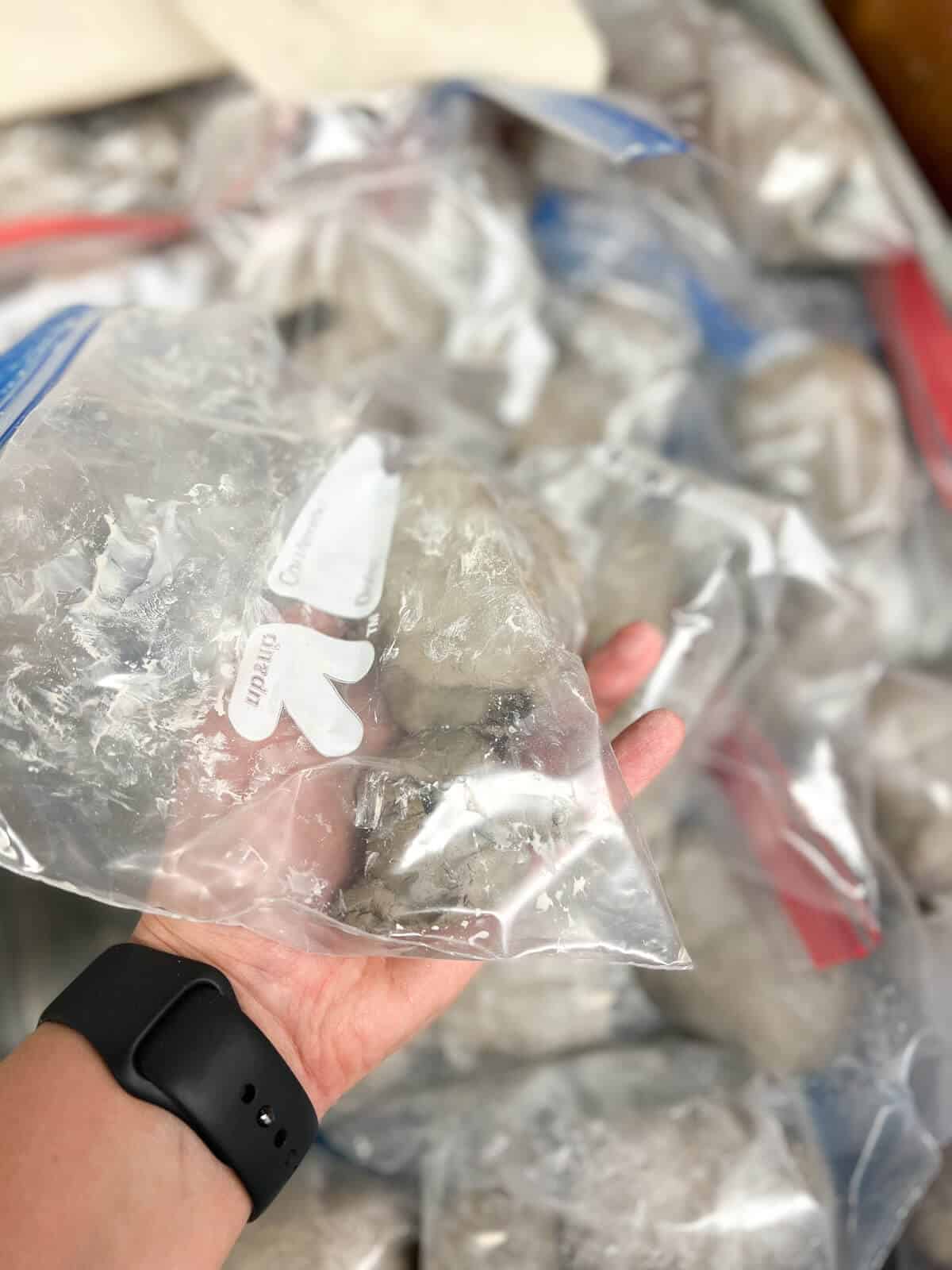
- Pass out large gallon-sized bags and label them with the child’s name and class (if doing this with a large group)
- Pass out all clay needed for the whole build
- All clay will be stored in the bag for the next time
- Have kids flick 3 “flicks” of water on their fingers before closing the bag completely
- Show kids how to carefully zip part of the bag and gently push out the air before zipping it completely
- Model to kids how to carry the bag by holding clay projects and wrapping back around
Why do you not use slip with kids?
In 14 years, the method of just scoring and adding water has worked very well for these simple clay builds. The biggest reason this would not work is if your clay is not moist enough. Fresh clay or normally even clay from the previous year should work.
You can have students blend the seams with their fingers to help make sure items won’t fall off.

Supplies
- White clay: We like this type for class clay builds with elementary-aged kids
- Skewer or needle tool
- A small cup of water
- Clay placemat or surface to work on
- Glazes or acrylic paint
Tools
- Kiln
- Kiln shelves
What if I don’t have a kiln? Can I use air-dry clay?
Yes, most regular clay projects can be done using air-dry clay as well.
Do you have to use glaze?
We know better than anyone that sometimes glaze just isn’t in the budget. Other options for adding color to clay include: watercolor paint, acrylic paint, oil pastel with black ink resist, or just a simple clear coat.
If you are looking for a one-day clay build, check out these adorable clay owls.
How To Build A Clay Fish
*Note each of these builds is based on a 40-minute class time. Days may vary especially if doing this art project with a smaller group.
Day 1
Step 1: Split the clay into 3 close to equal sections.

Step 2: Roll 2 of them into spheres (notice I say sphere instead of balls..it just is easier than the giggles).
Step 3: Push your thumb into one sphere as far as it can go without going all the way through.

Step 4: Create a pinch pot but make sure kids do not make the walls to thin. Repeat pinch pot steps to create a matching pinch pot.
Step 5: Score the edges of each clay pot.

Step 6: Rub water along the two edges.

Step 7: Put pinch pots together. Use your finger to blend the seams. Be careful not to push too hard so as to collapse the fish body.

Step 8: Use the skewer to put a hole for the mouth. Students can make their fish mouths in a variety of sizes. I like to have all fish have mouths to help with airflow in the kin.

Step 9: Use fingers to sculpt a fish mouth and/or use your finger to pop any spots that may have collapsed.
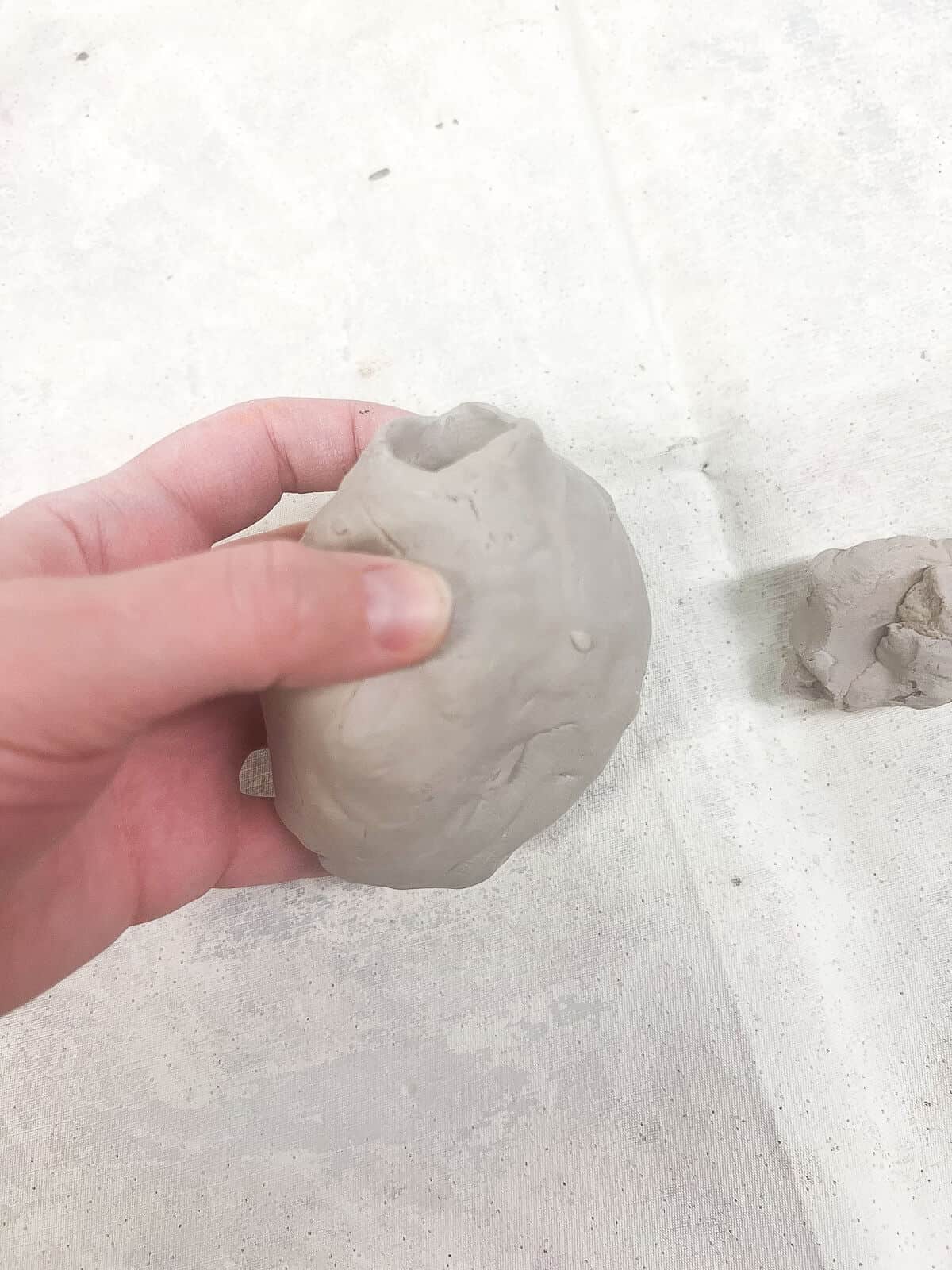
If doing this with a class, this is a great stopping point. Follow the clay storing tips above to keep the clay moist until the next time they can build.
Day 2
Step 10: Make details such as fins and eyes by making a small slab and cutting through the clay in the desired shapes.

Step 11: Continue to build fish eyes, side fins, tail fins, and any other details they want to add.
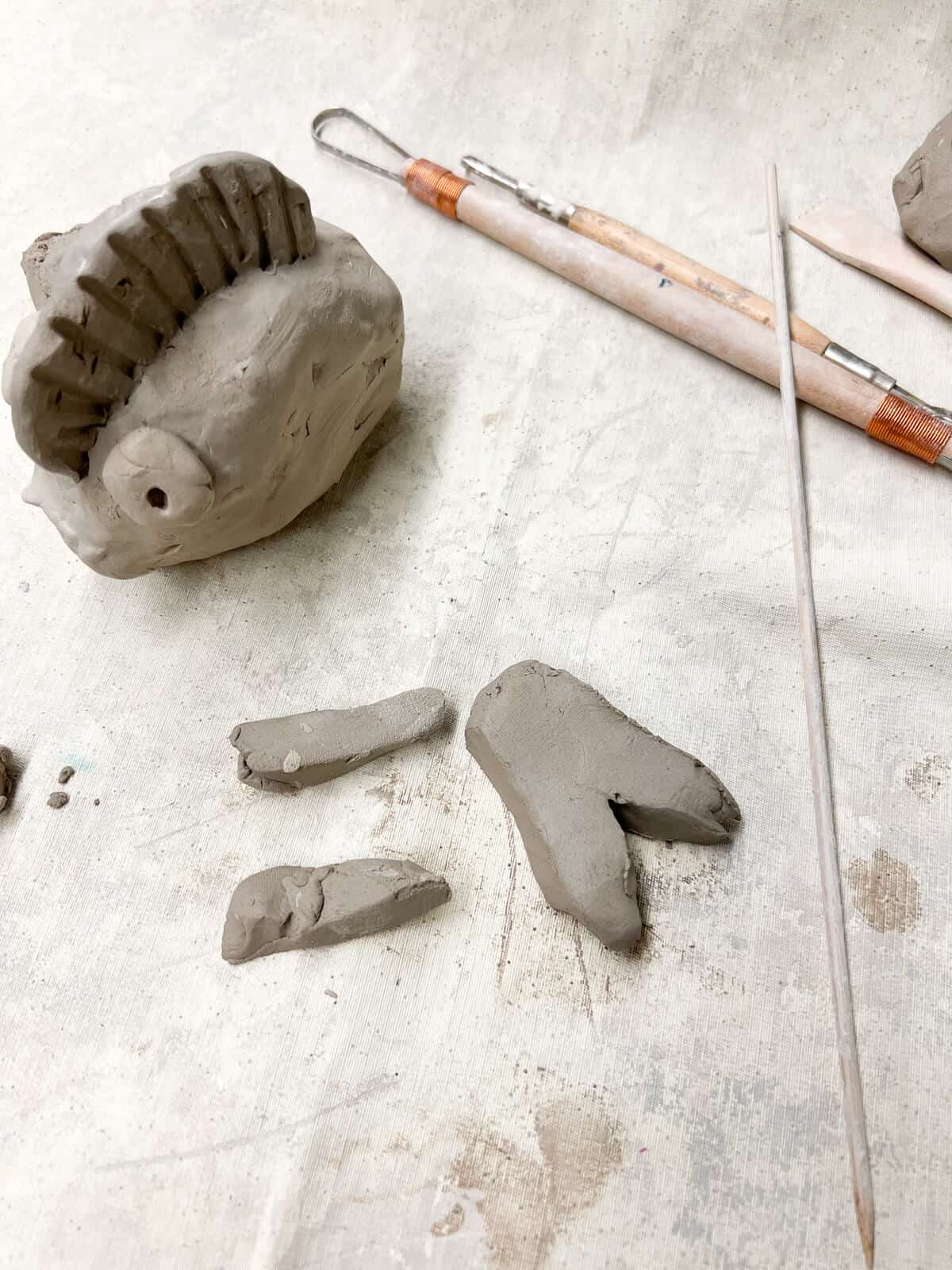
Step 12: Make sure kids score (draw small lines on both the item they are attaching and where they are attaching it). The most important part is that kids score first and then add water no matter what they are attaching.

Step 14: Use a skewer, popsicle stick or clay tools to add extra fish-like textures.

Step 15: Write the child’s name on the bottom of the fish. I always think it is best to have an adult do this. You can use a skewer but a nice needle tool will help you get a fine line.

How long should you let these clay fish dry?
For any elementary art clay project that I do, I wait at least a week. Some of these fish may take that long to dry depending on the thickness of the clay and how much they add. It is always better to be safe than sorry.
Load your kiln and run the kiln at Cone 06 if you using the clay we recommended above.
Glazing your ceramic fish sculptures
Day 3 and 4
Step 16: Show how to use glaze by using 3 coats of the same color glaze and rinsing brush in between.
I do not let kids glaze the bottom of their projects so that I do not have to use kiln stilts.
Step 17: Repeat the glazing process until all white areas are covered. See our tips for getting kids to glaze clay projects well.

Place in the kiln again and read the instruction on your glazes. We find that these Mayco glazes work really well with elementary artists.
We wrote a whole post on tips and tricks to successfully use glazes with children. The kids are always so amazed when they see their finished glazed clay fish.
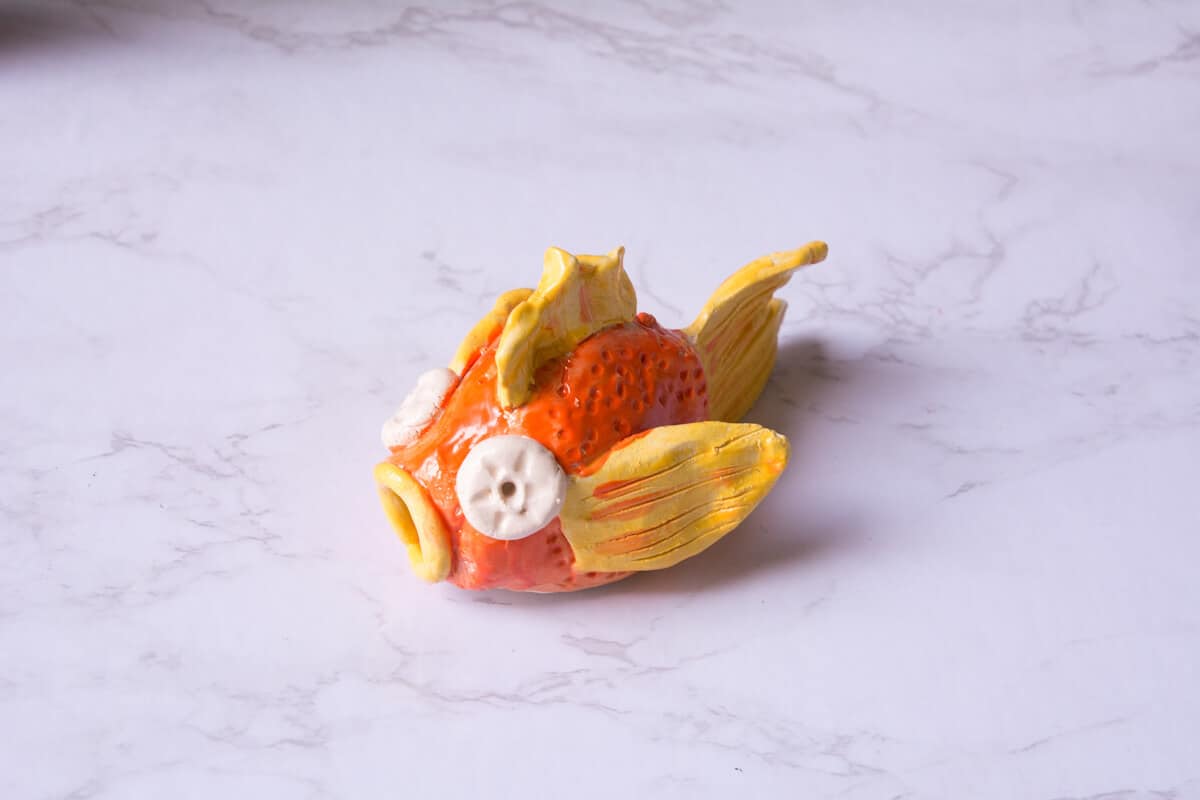
Looking for another fun pinch pot art project for kids?
- Pinch Pot Monster ceramic idea!
- Easy Pinch Pot Turtle
- Animal Pinch Pots
We just love opening the kiln and seeing the awesome clay fish art projects!
Don’t have time to glaze your fish? Learn how to use watercolor paint on clay to create a fun effect. A clear sealer really makes all the difference.
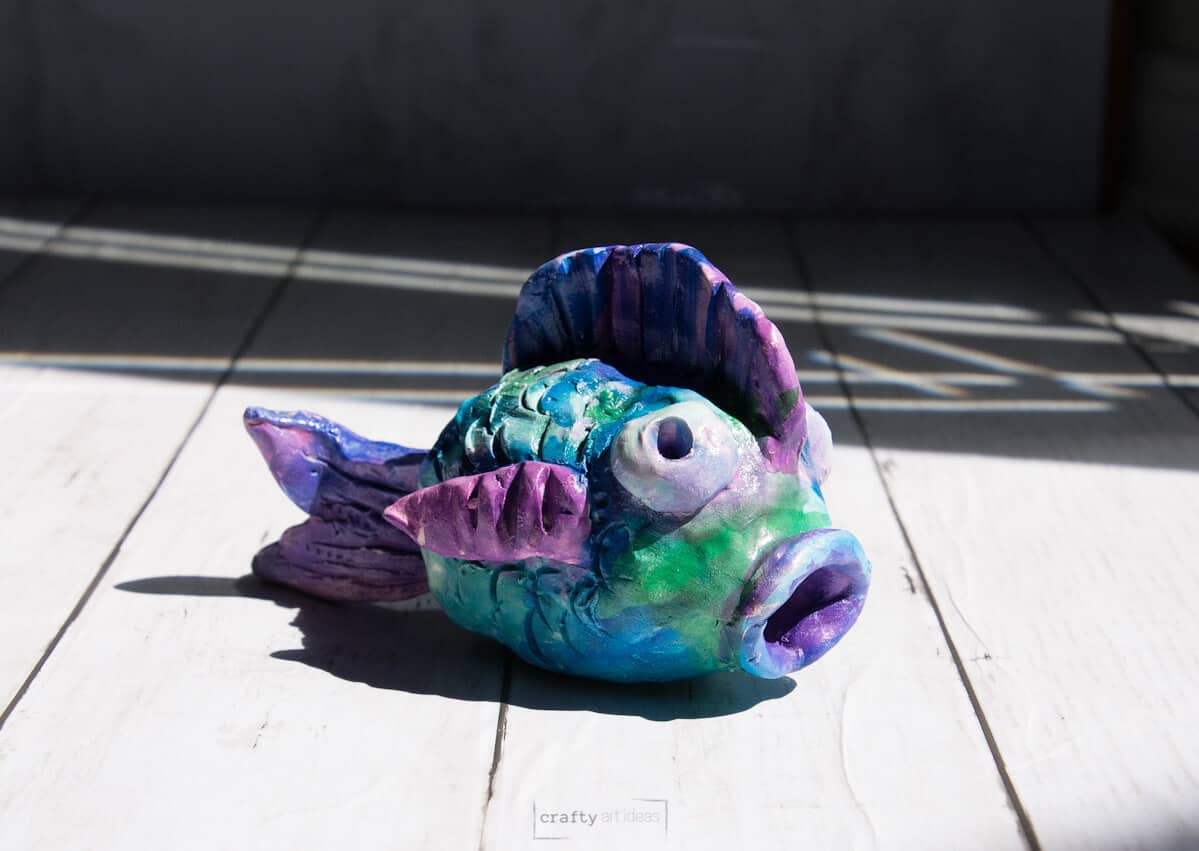
Follow us on Pinterest or Flipboard for more free art and craft ideas!
Do you like this art project? Please give us 5 stars below 🤩🤩🤩🤩🤩 and have fun being creative with your family.
Printable instructions here

How To Build A Clay Fish
Equipment
- Wooden Skewer
- Clay Needle Tool
- Clay Placemats
- Clay Needle Tool (For adult)
- Kiln
- Paint Brush
- Optional: other clay tools
Instructions
- Split the clay into 3 close to equal sections.
- Roll 2 of them into spheres (notice I say sphere instead of balls..it just is easier than the giggles).
- Create 2 matching pinch pots.
- Score the edges of each clay pot and rub water along the two edges.
- Put pinch pots together.
- Use your finger to blend the seams. Be careful not to push too hard so as to collapse the fish body.
- Use the skewer and fingers to help sculpt fish mouth.
- Build fish eyes, side fins, tail fins and any other details they want to add.
- Use a skewer, popsicle stick or clay tools to add extra fish-like textures.
- Write the child’s name on the bottom of the fish.
- Run a bisque fire in your kiln according to recommendations.
- Repeat glazing process until all white areas are covered.
- Run projects in kiln following instructions on the glaze you are using.
Notes
- Make sure kids score first and then add water no matter what they are attaching.
- Using double-pinch pots helps the inside of the fish stay hollow.
- Allow proper dry time to ensure all moisture is out of the clay before firing. We would like to wait a week before performing a bisque fire for a class ceramic project.


This looks like so much fun and a great beginner project for working with clay. Thanks for sharing your cute fish! <3
Thanks Tania! Yes, this clay fish project is a perfect beginner clay art project.